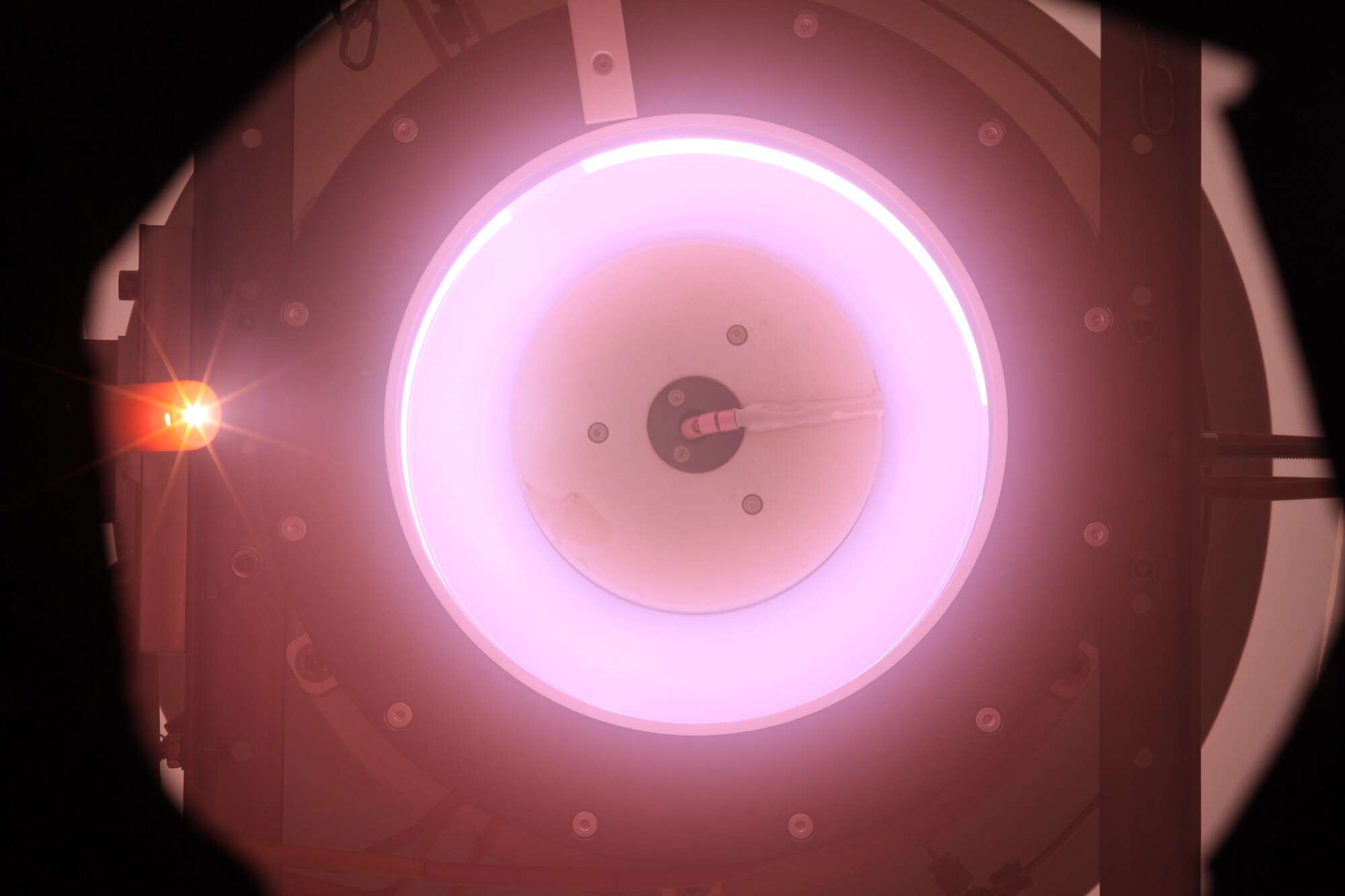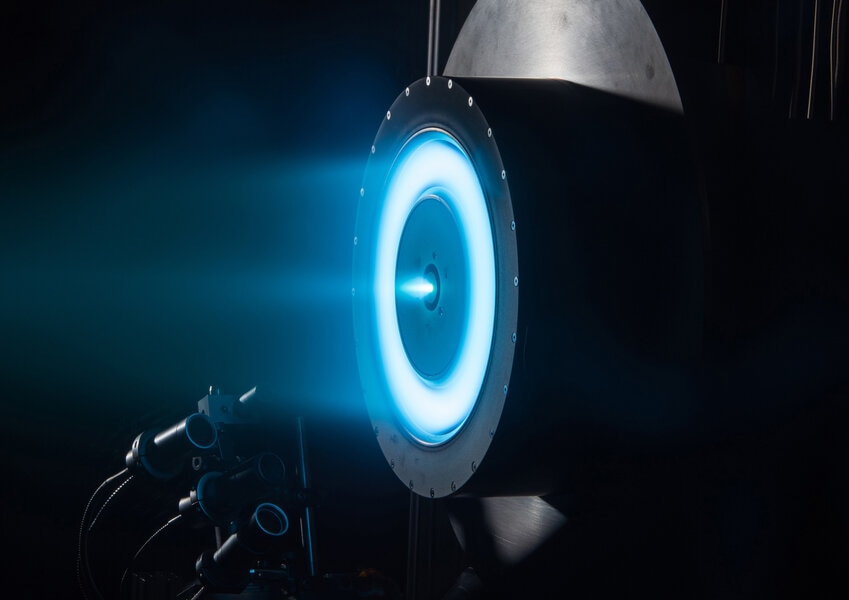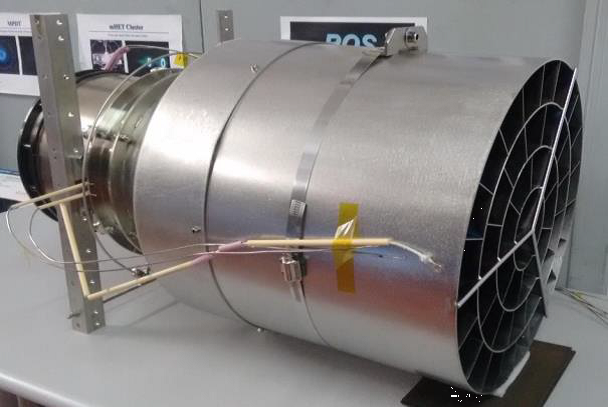Create a free profile to get unlimited access to exclusive videos, sweepstakes, and more!
Air-breathing space engines: A last-minute reprieve for decaying orbits?

Roughly once a week or so, a piece of space junk burns up in Earth's atmosphere.
This happens in part because we put a lot of stuff into space that's no longer needed once its job is done; like, say, rocket boosters. And sometimes it's old, derelict satellites that have ended their lives, or become obsolete. For the most part these things burn up and are completely vaporized in the upper atmosphere.
The problem is that for some objects they're still useful, and/or possibly big. In neither case do we want them coming back down! In the first case we lose a valuable asset, and in the second you don't want pieces to make it to the ground (like the Chinese Tiangong-1 space station which recently came down over the Pacific Ocean).
This is an issue because in low Earth orbit, say a few hundred kilometers above our surface, the vacuum of space is really a not-quite-vacuum of space. There's still air up there, incredibly thinly dispersed. But it's there, and every time a satellite plows into a molecule it loses a teeny amount of energy. This drops the orbit, which is a positive feedback loop: As it drops the air gets thicker, dropping it faster. At some point (usually around 120-150 km or so up) it becomes catastrophic. The air is thick enough to tear apart the spacecraft and vaporize it.
To compensate for this, many satellites have thrusters on board to boost their orbits. The problem there is that eventually they run out of fuel. When that happens, they can no longer compensate for the very weak but inexorable force of drag, and in a few years, well, down they come.
So engineers with the European Space Agency came up with a very clever idea: What if instead of bringing fuel with the satellites, the satellites used the air itself for fuel?
This won't work for chemical rockets; the air is mostly nitrogen and oxygen, and you need more than that to make propellant. But there's another kind of engine, one that's been used for decades, that can use these molecules: electric thrusters.
These don't use a chemical reaction to create thrust. Instead, they use individual atoms or molecules of a gas. In broad terms the atoms are ionized — an electron is stripped off — and the resulting ion is then accelerated hugely using an electric field. The atom is aimed out the back of the engine and leaves at high velocity. And by "high," I mean high: A typical ion thruster can fling the atoms out the back at speeds of 40 kilometers per second or more.
Newton's Third Law of Motion is behind all this: Every action has an equal but opposite reaction. Throw something behind you and you'll get pushed forward, and how hard you get pushed depends on momentum. You can throw something heavy behind you at low speed and get pushed forward, or you can throw something light at much higher speed and get the same result.
So an atom won't give much of a kick, but when it's moving at 140,000 kilometers per hour, well, that adds up. An ion drive has very low thrust in terms of force. It has about the same force as a piece of paper resting in your hand. But you can leave an ion drive switched on for months, even years. Over all that time it builds up a terrific amount of total thrust. This can change the velocity of a spacecraft substantially; the Dawn probe in the asteroid belt used an ion drive to change its velocity by 10 km/s! That's huge.
And the amount of fuel you need is small. A typical tank for an ion drive holds maybe 40 kilograms of xenon. Yet that can provide the same kick (over time) as a chemical rocket using tons of fuel!
Still, even at those miserly rates that fuel will eventually run out. What then?
That's the beauty of this new ESA thruster. It uses air in the Earth's atmosphere for fuel! In principle the drive won't care what molecules it uses. The problem, though, is collecting it. In the near-vacuum of low Earth orbit, the air molecules are so far apart they don't act much like a gas. They act more like individual particles, so they don't flow, and you can't just put a funnel in the front of the engine and collect them. They'll bounce off.
The ESA engineers overcame that by using a two-step process that collects and slows them down so they're able to be used. They modeled how air flows to create the best design, built it, then tested it in a chamber that moved particles at high speed into the drive, to mimic collecting them in orbit at typical speeds of 8 kilometers per second.
They tested it first using tried and true xenon gas, and got the normal but eerily lovely blue glow from the ionized gas as it came out the back. Then, as they switched to a nitrogen/oxygen mix, the glow turned pinkish-purple (the color emitted by that gas mix when it's ionized and the electrons recombine with it).
I love that. There's a lot of tech to see if the engine worked — and I'm so used to Star Trek where they use sophisticated sensors to make sure their engineering schemes are playing out correctly — but they just used their eyes and saw it.
Well, to be fair, our eyes are pretty sophisticated! And in this case, it was enough. They then switched to an all N2/O2 gas, and the thruster chugged along just fine.
This is very exciting. It could breathe new life (nearly literally) into satellites as they get low enough into the atmosphere where, currently, they'd be lost. Now they can use the air causing their grief to be the cure of it!
The technology isn't at the stage where it can be off the shelf, but it's ready to be developed. If all goes well it may be in use in a few years. It'll be very interesting to see how it gets implemented! Besides being used to raise the orbits of satellites, it could be used to keep them at that low altitude, which right now is impossible.
I wonder what kind of science that would allow? I guess pretty soon we'll see.





























